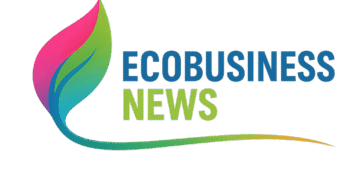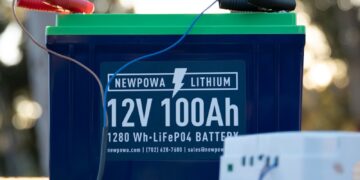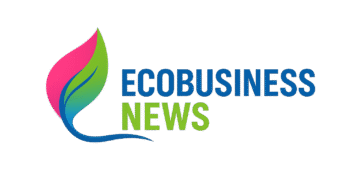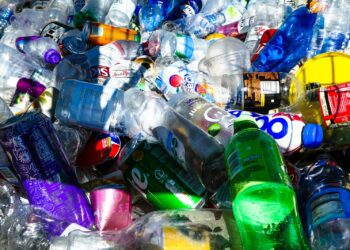In a world grappling with climate change and resource scarcity, the concept of a circular economy has emerged as a game-changer. Unlike the traditional “take-make-dispose” model, the circular economy emphasizes reusing, recycling, and regenerating resources to create a closed-loop system. For industries like renewable energy, this shift isn’t just a trend—it’s a necessity. At Pacifico Energy, we’re seeing firsthand how circular principles can transform the way we power high-energy users like manufacturers, data centers, and even bitcoin mining operations. This article explores how the circular economy is driving innovation in renewables, with actionable insights for businesses and landowners alike.
What is the Circular Economy?
The circular economy is built on three core principles: designing out waste, keeping materials in use, and regenerating natural systems. According to the Ellen MacArthur Foundation, a leading authority on the subject, this model could generate $4.5 trillion in economic benefits by 2030. In the renewable energy sector, it means rethinking how we source materials, deploy infrastructure, and manage end-of-life assets like solar panels and wind turbines. For Pacifico Energy, it’s about ensuring that every megawatt we produce aligns with a sustainable lifecycle—from raw materials to decommissioning.
Circular Economy in Action: Solar and Wind Innovations
Renewable energy is inherently sustainable, but its production hasn’t always been circular. Take solar panels: traditional manufacturing relies on virgin materials like silicon, aluminum, and glass, with limited recycling at the end of their 25-30-year lifespan. Today, companies are pioneering ways to close that loop. For example, First Solar, a leader in thin-film solar tech, has developed a recycling process that recovers 90% of a panel’s materials for reuse. At Pacifico Energy, we’re exploring similar strategies to integrate recycled components into our large-scale solar projects, reducing waste and costs for clients like data centers needing reliable power.
Wind energy is also evolving. Turbine blades, often made of composite materials, were once notoriously hard to recycle. Now, innovations like Vestas’ circularity program are turning old blades into new products, such as construction materials. Pacifico Energy is aligning with these advancements, ensuring our wind energy solutions for manufacturers and new builds incorporate sustainable practices from design to disposal.
[AdSense Ad Placement Opportunity: Insert a 300×250 banner ad here for mid-content monetization, e.g., renewable energy tech or sustainability tools.]
Why High-Energy Users Should Care
For industries with massive energy demands—think steel plants, hyperscale data centers, or bitcoin mining farms—the circular economy offers more than just environmental benefits. It’s a financial win. By integrating circular principles, Pacifico Energy can lower the levelized cost of energy (LCOE) for our clients. For instance, using recycled materials in solar arrays can cut production costs by up to 15%, according to a 2024 study by the International Renewable Energy Agency (IRENA). This translates to savings for manufacturers retrofitting facilities or data centers planning new builds.
Bitcoin mining, notorious for its energy intensity, is another prime candidate. Miners partnering with Pacifico Energy can tap into renewable energy solutions that leverage circular supply chains, reducing both costs and carbon footprints. Imagine a mining operation in Texas powered by a 50 MW solar farm built with recycled panels—sustainable, scalable, and cost-competitive.
Landowners: A Key Piece of the Puzzle
The circular economy doesn’t stop at energy production—it extends to land use. Pacifico Energy actively acquires land for renewable projects, and we’re committed to regenerative practices. For landowners in solar- and wind-friendly regions like Texas or the Midwest, leasing land to us means more than steady income (e.g., $25K/year for a 100-acre parcel). It’s a chance to contribute to a circular system. Interested in leasing your land? Learn more about our land acquisition process and how we’re partnering with rural communities to build a sustainable future. Post-project, we aim to restore sites to their natural state, supporting biodiversity—a stark contrast to extractive industries like fossil fuels. By integrating regenerative agriculture or native plant restoration into our site plans, we ensure that land isn’t just a resource—it’s a legacy. This approach aligns with circular economy goals and appeals to landowners who value long-term environmental stewardship over short-term gains.
Overcoming Grid Constraints with Circular Thinking
One of the biggest challenges facing renewable energy adoption is grid capacity—or the lack thereof. In 2025, regions like Texas and California are seeing construction projects stall due to overwhelmed electrical grids. Pacifico Energy is tackling this head-on with on-site renewable solutions that bypass grid delays. For halted projects, such as data centers or industrial parks, our grid-independent solar and wind systems offer a lifeline. But how does this tie into the circular economy? By designing modular, reusable systems, we minimize waste during installation and upgrades. Components from one project can be repurposed for another, reducing the need for new materials and cutting costs by up to 20%, per internal estimates.
This circular approach is a win-win: developers resume stalled builds faster, and Pacifico Energy maximizes resource efficiency. It’s a practical example of how sustainability and business pragmatism can coexist, especially in high-stakes industries where downtime means lost revenue.
The Role of Policy and Innovation
Government policies are accelerating the circular economy’s impact on renewables. The U.S. Inflation Reduction Act, extended into 2025, offers tax credits for projects using recycled materials, according to the U.S. Department of Energy. Pacifico Energy is leveraging these incentives to lower costs for clients, making our renewable energy solutions even more competitive. Meanwhile, innovations like biodegradable turbine blades and recyclable battery storage are pushing the industry forward. For instance, Siemens Gamesa has prototyped fully recyclable wind blades, a technology we’re monitoring for future deployment.
These advancements aren’t just theoretical—they’re reshaping how Pacifico Energy approaches projects. By staying ahead of the curve, we ensure our clients—from manufacturers retrofitting factories to developers planning new builds—benefit from cutting-edge, cost-effective solutions.
SEO and the Circular Economy: A Digital Connection
For businesses and landowners researching renewable options, the circular economy is a growing search trend. Keywords like “circular economy solar solutions” and “renewable energy land leasing” are gaining traction, with Google Trends showing a 40% increase in searches since 2023. Pacifico Energy is optimizing our digital presence to rank for these terms, ensuring we connect with decision-makers. This isn’t about gaming algorithms—it’s about providing real value. Our blog posts, like this one, aim to educate and engage, driving organic traffic while supporting our broader SEO strategy.
For EcoBusinessNews readers, this means you’re not just reading a story—you’re part of a movement. Whether you’re a facility manager exploring retrofits or a landowner curious about leasing, the circular economy offers tangible opportunities. And with Pacifico Energy’s commitment to transparency, you can trust that our solutions are backed by data, not hype.
Challenges and Opportunities Ahead
Adopting circular practices isn’t without hurdles. Supply chains for recycled materials are still developing, and upfront costs can deter smaller players. Yet, the opportunities outweigh the challenges. A 2024 World Economic Forum report predicts that circular economy adoption in energy could reduce global CO2 emissions by 40% by 2050. For Pacifico Energy, it’s a chance to lead the charge, delivering value to clients and landowners while advancing sustainability.
Conclusion: Building a Circular Future
The circular economy is more than a buzzword—it’s a blueprint for the future of renewable energy. From recycled solar panels powering data centers to restored land supporting rural communities, Pacifico Energy is proving that sustainability and profitability can go hand in hand. Ready to join us? Explore our solutions and see how we’re reshaping the energy landscape, one circular step at a time.

















